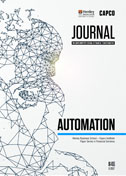Financial institutions have quickly adopted robotic process automation (RPA) in recent years, owing to the plethora of manual operational processes in the industry, in order to benefit from significant opportunities for cost reduction and efficiency gains. It is quite unlikely that any executive would say no to a relatively cheap solution that enables the workforce to focus on more value adding activities and adjusts the overall cost structure.
Whilst the RPA market growth rate paints a bright future, early RPA adopters have reported challenges with meeting expectations at the outset. Many tall claims have been made of reducing costs, increasing accuracy, improving compliance, and automating work at a fraction of time and cost compared to typical IT projects. However, the high expectations of RPA have created confusion amongst business stakeholders with regards to the capabilities, benefits, and use cases of RPA tools.
Understanding RPA suitability and quantifying the associated benefits is challenging, as many organizations view it primarily as a cost reduction tool, limiting the scope and benefits that can be realized. This has further contributed to the unrealistic expectations business stakeholders have outlined for RPA to deliver and resulted in over a third of RPA projects failing to deliver those expected benefits.
Thus, when embarking on an RPA journey one needs to first determine which use cases are suitable for RPA within the context of the associated benefits, as well as the potential drawbacks or pitfalls.
In this paper, we explore how RPA has been used across various industries, the challenges faced by early adopters, and the approaches to overcoming these challenges to ensure the real potential of RPA can be unlocked by financial services organizations.
